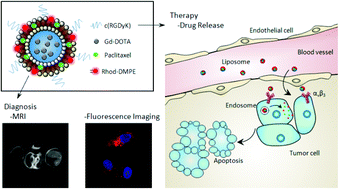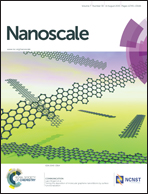MRI-visible liposome nanovehicles for potential tumor-targeted delivery of multimodal therapies
Abstract
Real-time diagnosis and monitoring of disease development, and therapeutic responses to treatment, are possible by theranostic magnetic resonance imaging (MRI). Here we report the synthesis of a multifunctional liposome, which contains Gd-DOTA (an MRI probe), paclitaxel and c(RGDyk) (a targeted peptide). This nanoparticle overcame the insolubility of paclitaxel, reduced the side effects of FDA-approved formulation of PTX-Cre (Taxol®) and improved drug delivery efficiency to the tumor. c(RGDyk) modification greatly enhanced the cytotoxicity of the drug in tumor cells A549. The T1 relaxivity in tumor cells treated with the targeted liposome formulation was increased 16-fold when compared with the non-targeted group. In vivo, the tumors in mice were visualized using T1-weighted imaging after administration of the liposome. Also the tumor growth could be inhibited well after the treatment. Fluorescence images in vitro and ex vivo also showed the targeting effect of this liposome in tumor cells, indicating that this nanovehicle could limit the off-target side effects of anticancer drugs and contrast agents. These findings lay the foundation for further tumor inhibition study and application of this delivery vehicle in cancer therapy settings.


 Please wait while we load your content...
Please wait while we load your content...